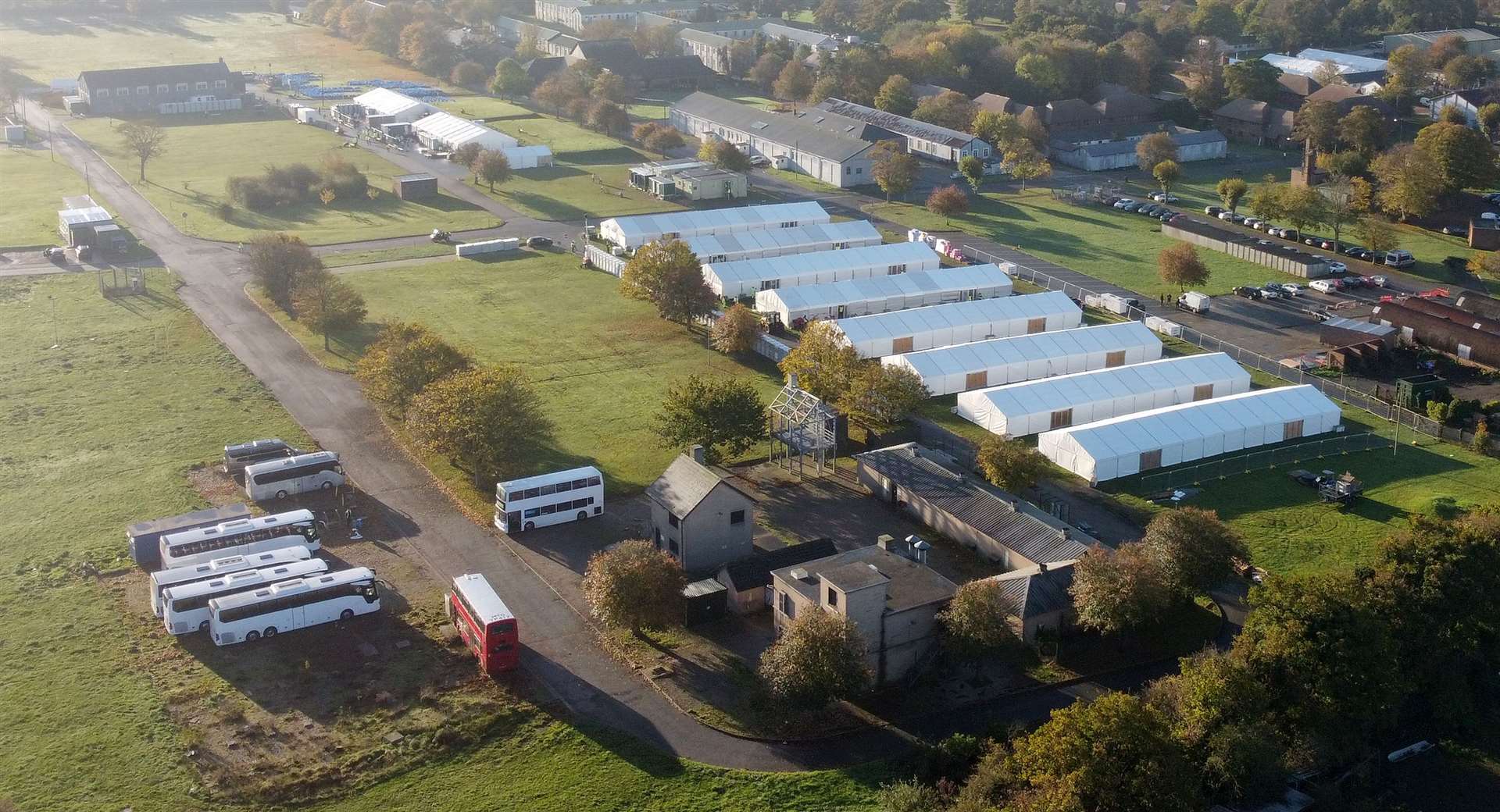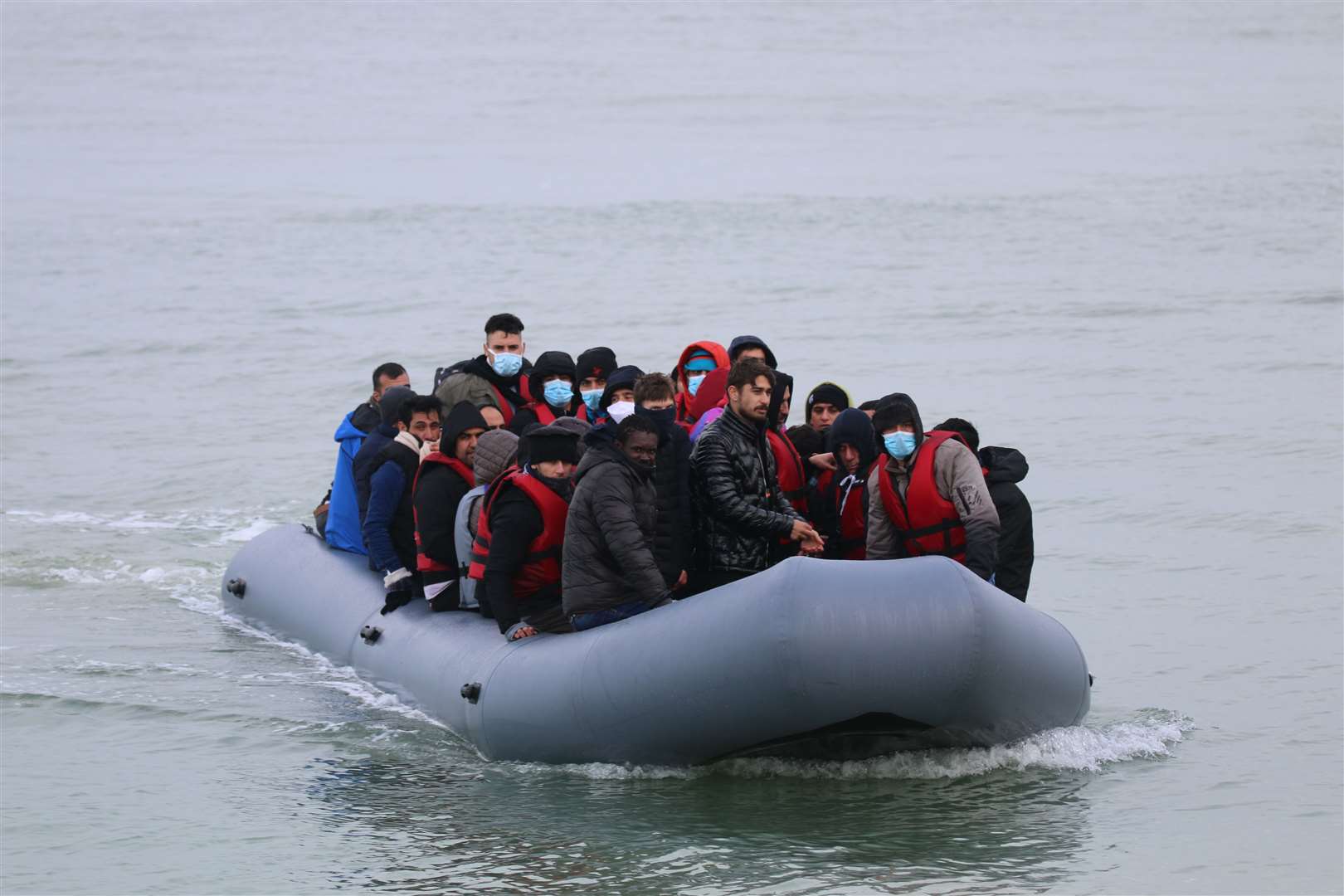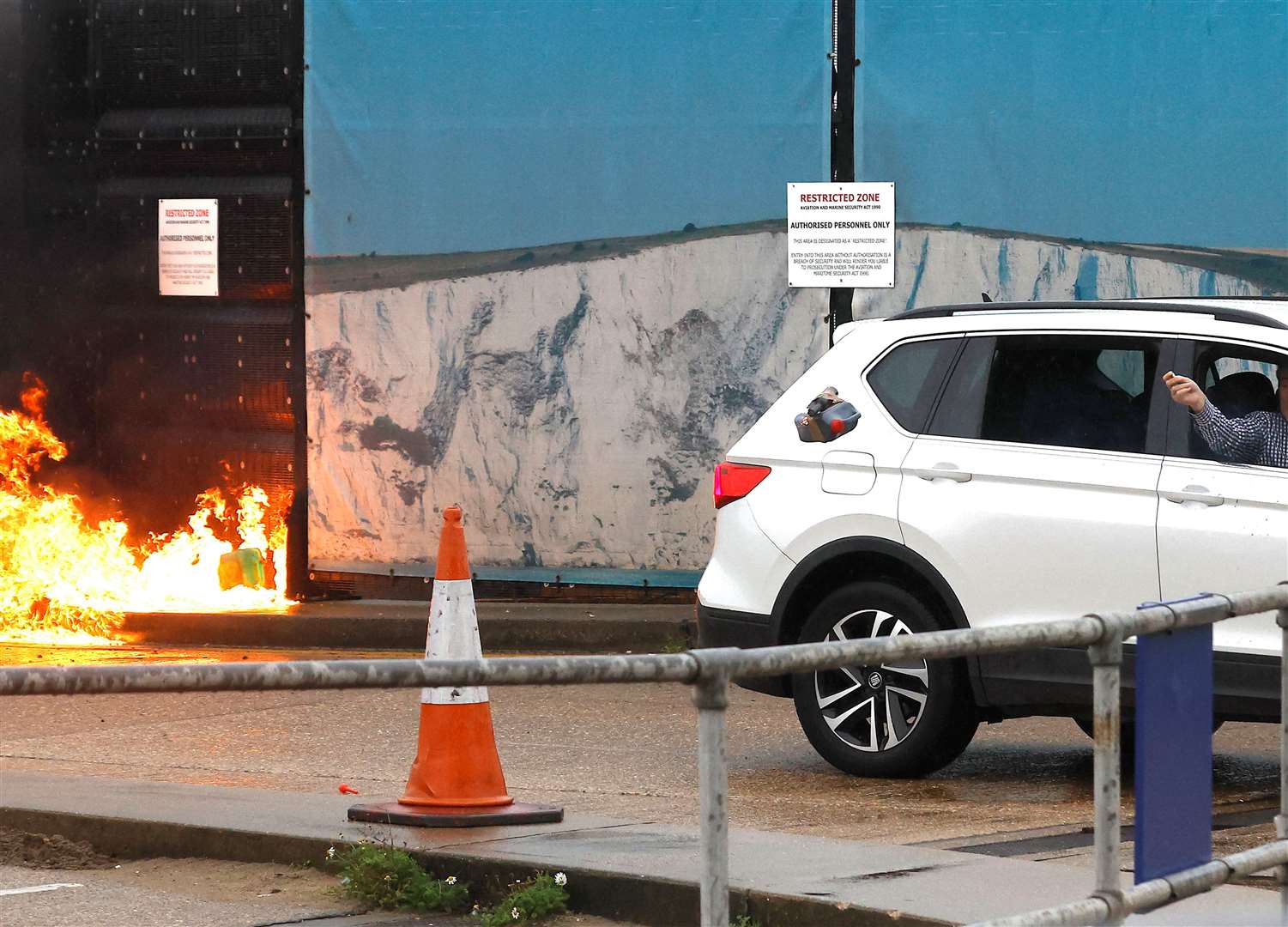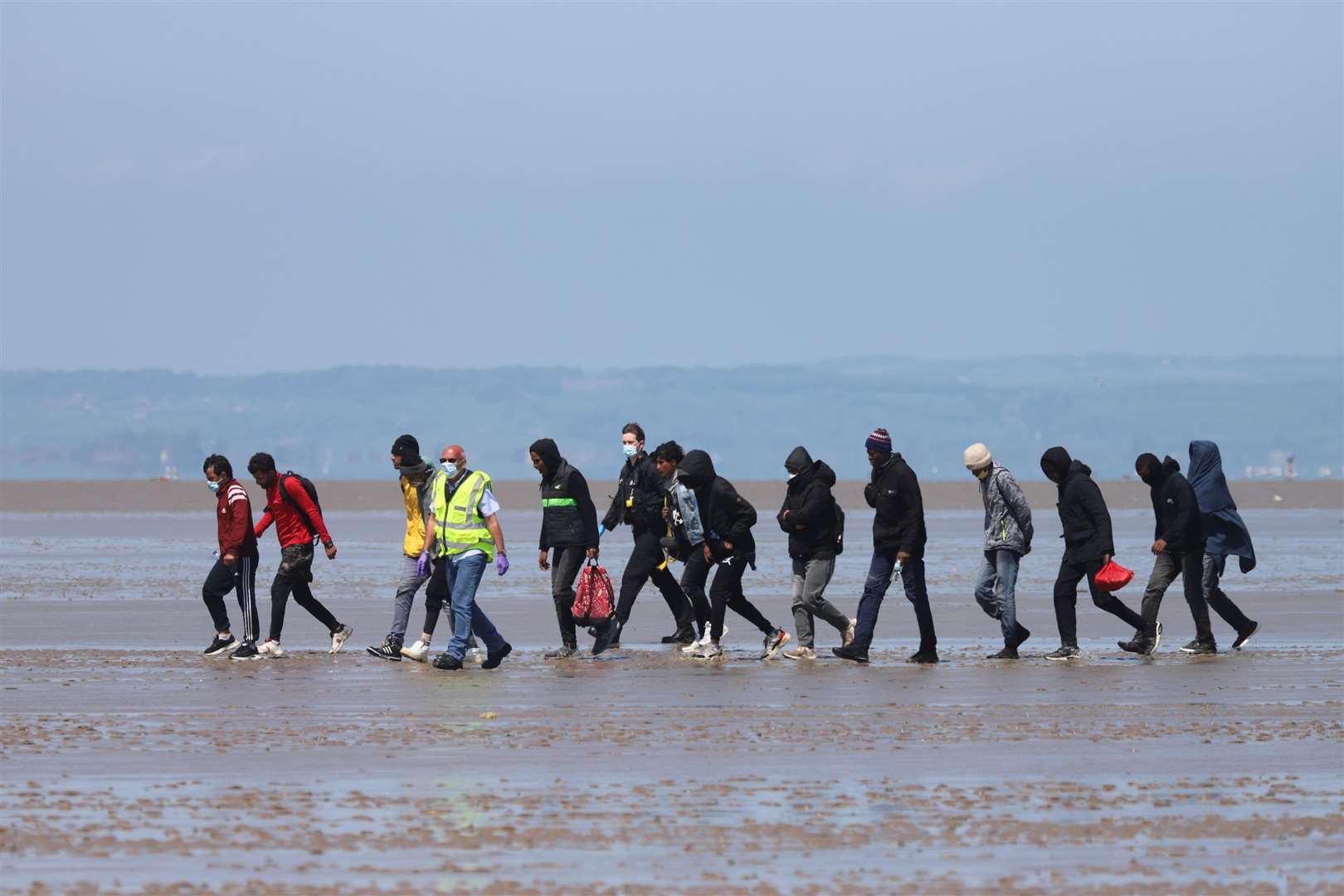What is the immigration processing centre at Manston and why is it proving so controversial?
Manston #Manston

As pressure grows on Home Secretary Suella Braverman over her handling of problems at an immigration site in Manston, just what exactly is causing such uproar?
We take a look at the key issues and answer the burning questions…..

A view of the Manston immigration short-term holding facility located at the former Defence Fire Training and Development Centre. Picture: PA
Why are asylum seekers being held at Manston?
Up until 1999, the Ministry of Defence owned the sprawling Manston Airport site in Thanet. Having sold the main area of land it covered – the runway and terminal buildings you can see when driving past – it retained buildings on neighbouring land.
And in January of this year, it decided to turn the former Defence Fire Training and Development Centre into a site to process the application of asylum seekers.
For those familiar with the site, this is on the land to the north of the airport, which sits opposite the two aviation museums on the Manston Road and which has always remained heavily protected – with barbed wire fences and much of it obscured from view from the road.
It made the decision in a bid to provide further capacity to cope with the rising number of people making the perilous Channel crossing.

The sight of people arriving on the county’s shores are no longer unusual
Why not Dover?
Previous to the site at Manston being used, those crossing the Channel were detained at a processing centre in Tug Haven, Dover. However, this came under criticism after inspectors found the Home Office’s response to the challenges of increasing numbers of people was “poor”.
David Neal, the Independent Chief Inspector of Borders and Immigration (ICIBI), said: “These migrants crossed the Channel in dire circumstances. Many were vulnerable and at risk, including children and women on their own, and when they arrived in Dover the way they were dealt with was unacceptable. This is because the Home Office has failed over the past three years to move from a crisis response to having better systems and procedures in place and treating this as business as usual.”
In a bid to address this issue, the Home Office decided to open two new sites. The first was at Western Jet Foil in Dover – where those coming into the country would be initially processed (it was this site subject to the petrol bomb attack at the weekend).
They would then be transported, by coach, to the site in Manston.
There they will be fully processed and, so the theory goes, be held for around 24-48 hours, before being moved into temporary accommodation while their applications are processed, or released on bail.

The incident at Dover at the weekend prompted a surge in numbers being taken to Manston. Picture: Reuters/Peter Nicholls
So what went wrong and propelled the Manston site into the headlines?
There is an equation which has caused many a headache for those tasked with handling this problem in the Home Office – just what do you do with the thousands of people crossing into the UK on small vessels claiming asylum?
There are, clearly, processes which those entering the country and making such a claim need to go through. Details need to be checked, interviews conducted and, ultimately, a decision made on each individual case. This takes time and requires suitable facilities for all parts of the operation.
More pressingly, there is the issue of how to house these people – the bulk of whom have fled their homeland due to war or persecution.
If accommodation is not ready or available once they have been processed at Manston, then there is a bottleneck – which is at the heart of the problem we are seeing now. More on that in a moment.
Given the recent unseasonably good weather and calm seas, there has been no let up in the number of people making the journey. Indeed, this year has already seen the highest numbers on record.
The consequence has been a build up of people – and problems – which is now manifesting itself at the Manston site.

The sight of people arriving on the county’s shores are no longer unusual
Just what exactly are the problems – and why is there such a political row?
Firstly, there is an issue of overcrowding. The site is designed to hold 1,600 people. Reports suggest that, currently, that figure is closer to 4,000.
The problem, it is being suggested, comes down to inadequate numbers of hotel rooms being booked up by the Home Office to temporarily home people once through Manston – as has been government practice for some time.
Fingers have been pointed at Home Secretary Suella Braverman. It has been claimed repeatedly by sources inside Whitehall that when she was appointed by former PM Liz Truss, she stopped booking hotel rooms.
It was further alleged she had ignored advice about growing problems at Manston.

Home Secretary Suella Braverman is under fire
One government source, quoted in The Times recently, said: “She was refusing to allow anyone to leave Manston, even though the numbers were well above its capacity.”
When she resigned just prior to Truss’ stepping down from No 10, her temporary replacement, Grant Shapps, restarted the booking of hotels.
However, his grasp on the office of state was a short one and last week, controversially, Braverman was reinstated as Home Secretary as PM Rishi Sunak appointed his first cabinet.
North Thanet Conservative MP Sir Roger Gale said recently: “This situation should never have been allowed to develop, and I’m not sure that it hasn’t almost been developed deliberately.
“I was told the Home Office was finding it very difficult to secure hotel accommodation. I now understand this was a policy issue and that a decision was taken not to book additional hotel space.
“That’s like driving a car down a motorway seeing the motorway clear ahead. Then there’s a car crash and then suddenly there’s a five-mile tailback. The car crash was the decision not to book more hotels space.”
The car crash was the decision not to book more hotels space
The Home Office has, today, strenuously denied those claims, saying it was “right to look at all available options”.
Whatever the truth of who did what, the reality is a log-jam of people at Manston.
This has caused concern for the health and welfare of those being held at the site, given the inevitable tensions such cramped conditions will create.
There have been reported cases of diphtheria – a serious infection – reported at the site, as well as scabies – a skin condition caused by mites – and of the antibiotic-resistant so-called super bug MRSA.
As for the 24-hour limit on detention at the centre, that appears to being dramatically increased in many cases.
Giving evidence to a committee of MPs last week, David Neal, of the ICIBI, said one family from Afghanistan had been kept there for 32 days, while families from Iraq and Syria were left sleeping on the floor for a fortnight. He said the conditions at Manston left him “speechless”.
Speaking on BBC Radio 4’s Today programme recently, Lucy Moreton, a spokesperson for the ISU union, which represents border, immigration and customs officials, said: “The migrants aren’t being kept in humane conditions – they don’t have any enrichment, they don’t have anything to do, they’re bored, they’re frustrated and understandably they scrap among themselves and with us.”
Given the hotel shortage situation, and the Home Secretary’s tough approach to handling the situation, this is now becoming the first major political challenge for the new PM.

The government has yet to succeed in its bid to tackle the problem of Channel crossing by those seeking asylum
But isn’t booking hotels expensive? And who pays for them?
Yes, it is a hugely expensive process. In many cases hotels are block-booked which, obviously, won’t be free. The private operators will charge the Home Office for their use. During the pandemic, the situation was widely deployed as travel was restricted and the sites were available. As tourism kicks back into life, that now complicates the issue.
Earlier this year, it was reported that 37,000 asylum seekers were staying in UK hotels at a cost of £4.7 million per day. At the time, then Home Secretary Priti Patel insisted steps were being taken to try and develop new asylum schemes.
As to who picks up the bill? Well, ultimately, it’s the UK taxpayer. A Home Office spokesman said: “The number of people arriving in the UK via small boats has reached record levels, which has put our asylum system under incredible pressure and costs the British taxpayer millions of pounds a day.”

People at the Manston immigration short-term holding facility in Thanet. Picture:PA
Is it legal to hold people for so long at places such as Manston?
Under the current guidelines, those transported to Manston are supposed to be there only long enough to have their biometric details taken before moving into accommodation – such as a hotel.
But you cannot hold them for prolonged periods of time.
By ignoring legal advice or acquiring suitable hotel accommodation, the government could find itself accused of illegally detaining people.
The Home Office has denied any legal advice was ignored and said decisions were made on “the latest operational and legal advice”.